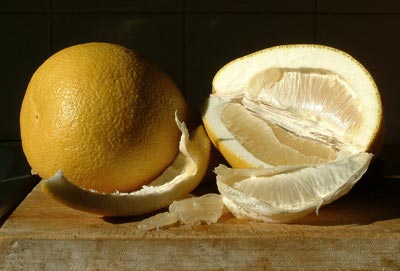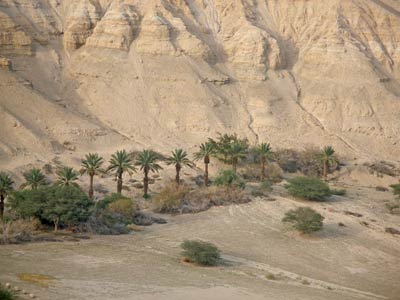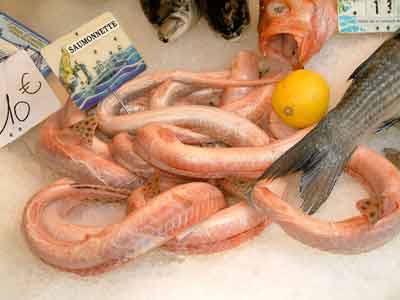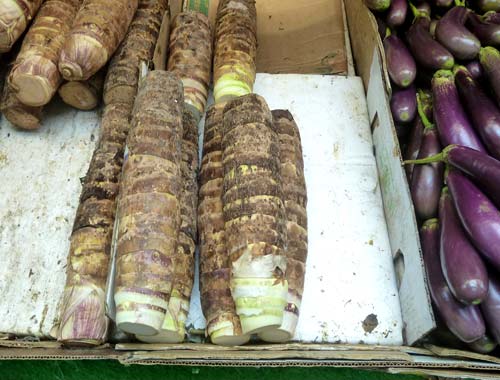
Pomelo. A citrus fruit similar in appearance to a grapefruit with one slightly pointed end. Once the thick skin is peeled, the segments need to have the tough leathery coating pulled away. Inside, the flesh can be deliciously sweet and juicy. It is better left for a few days after picking before it is eaten. There are pink and white versions. Is sometimes used in salads and savoury dishes.

This term originated in Libya where a fertile spot in the desert is called an oasis. It has now been generalised and is used in many contexts to indicate any desirable place - say a library might be an oasis of calm in a noisy world.
Osbana is a sort of Algerian version of haggis. The lungs and lights, liver and heart of a sheep are finely chopped and mixed with spices including cumin, coriander (US: cilantro) and chilli together with fried onion and garlic. This mixture is cooled, bound with egg and breadcrumbs and stuffed into the thoroughly cleaned stomach. The stomach is sealed with a stitch and then placed in a deep pot in a sauce made with tomatoes and with the same spices. It is cooked in this for at least two hours. This dish is traditionally served on the day of the feast of Eid El Adha when many sheep are slaughtered in honour of Abraham. No part of the sheep is left uneaten.
Very fine warqa, a phyllo-like pastry used in making brik. It is also a pie of pastilla stuffed with pigeon or chicken.
A name in southern Tunisia for the dentex, a large and versatile type of sea bream with good flavour.

Huss. This species of dogfish has a grey-brown skin with quite pronounced dark spots. Because of its relative similarity to a shark the coarse skin is usually removed by fishmongers. These fish grow to about 80 cm (32 inches) in length. The flesh is white or pinkish with a firm texture and good flavour. It is boneless. It is also commonly known as the spotted dogfish or nursehound or, in some places, as rock salmon or rock eel. Spurdog, smoothound and tope are all sold as huss. It is an excellent addition to soups because of its texture. It feeds on shellfish which flavours its own firm, white flesh.

Taro. Colocasia. A plant grown both for its leaves and tuberous, potato-like roots, or corms. The roots, the flesh of which may vary from white to pink, have a delicate flavour and can be peeled and boiled, roasted, mashed, fried or included in a stew.e flesh of which may vary from white to pink, have a delicate flavour and can be peeled and boiled, roasted, mashed, fried or included in a stew.